The latest reparation to Italy’s artistic heritage affected by the disasters of war came in June 2018 with the relocation of the detached frescoes of the Monumental Cemetery in Pisa to the wall. One must turn back the clock of history seventy-five years and stop it at the summer of 1944.
The war front in Italy is in rapid motion. Having overcome the obstacles of Monte Cassino and Anzio, having liberated Rome in early June, the Allied armies are sweeping northward, toward Florence and beyond Florence, the Po Valley. Field Marshal Kesselring, commander-in-chief of the German troops in Italy, as the great technician of warfare that he was, understood that, in the given situation, the only intelligent thing to do was to retreat in order beyond Florence, to stand on the formidable defensive system, already set up on the Apennines, known as the Gothic Line. These are months of attrition battles, carpet bombing, and fierce Nazi reprisals on the civilian population.
In July Allied troops have arrived on the Arno line between Empoli, San Miniato and Pisa, a line from which the Germans are gradually disengaging. There are no longer Germanic troops in the historic center of Pisa, but the way the Allies, especially the Americans, are conducting the war is well known. Rather than have a single citizen in arms risk his life, better to proceed with systematic preemptive bombardment of the territory to be occupied. It so happened that an incendiary fragment hit the roof of the Monumental Cemetery. The rafters collapsed and burned for three days and nights, the lead roofing melted from the heat, and the frescoes (those by Spinello Aretino, Taddeo Gaddi, Benozzo Gozzoli, and the so-called Master of the Triumph of Death) came out burned, “cooked,” decohesive, transfigured in their chemical composition.
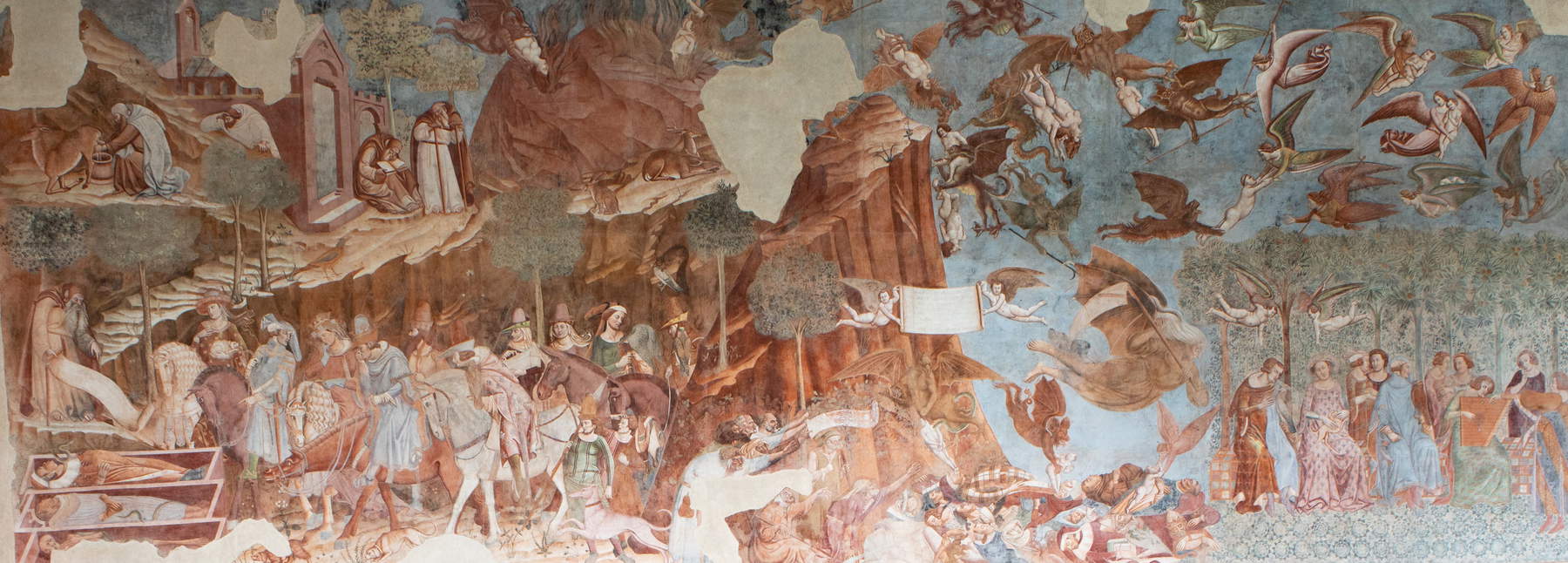 |
| Bonamico Buffalmacco, Triumph of Death (c. 1336; fresco, 564 x 1497 cm; Pisa, Camposanto Monumentale) |
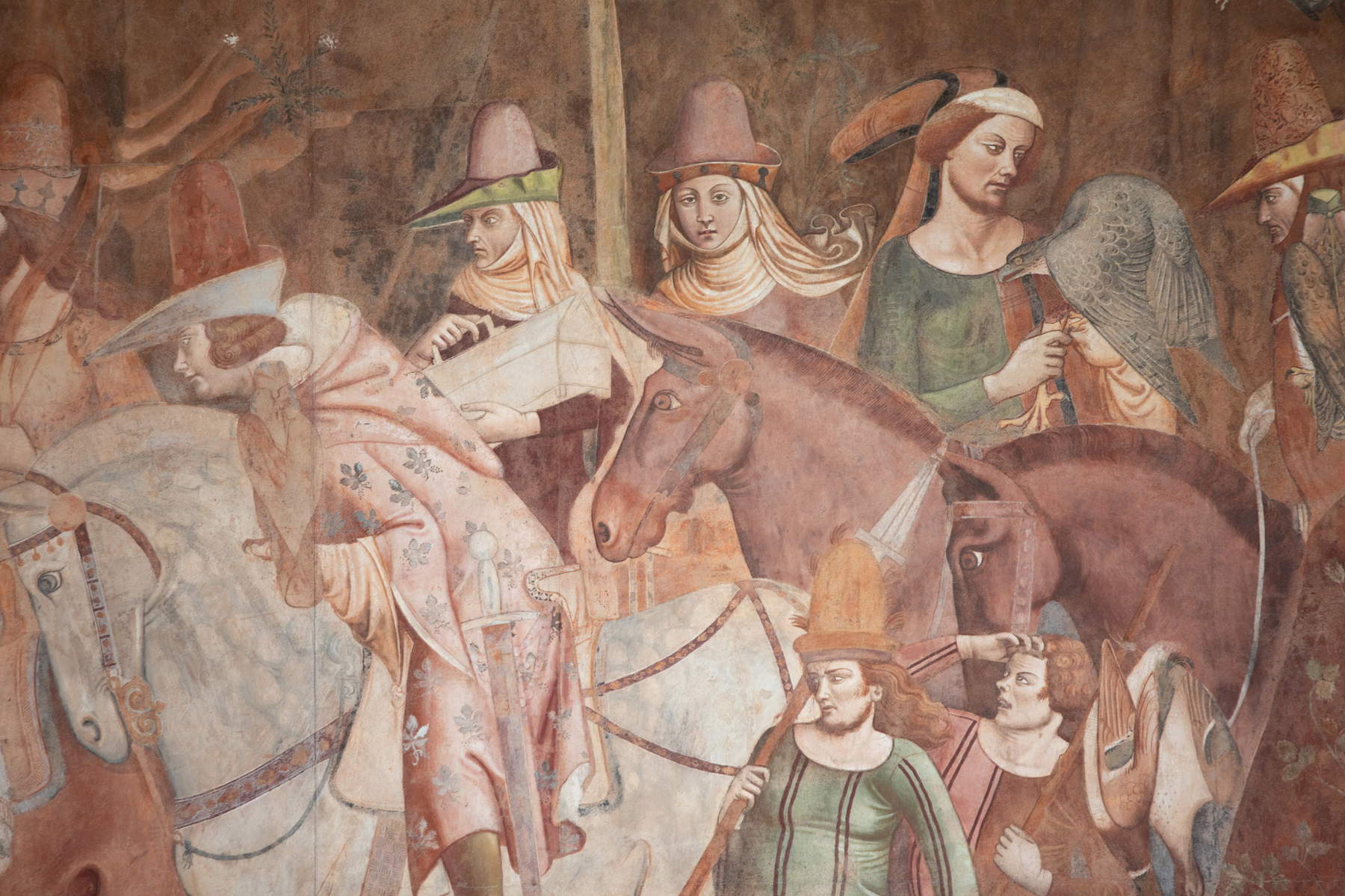 |
| Bonamico Buffalmacco, Triumph of Death, detail of the merry ride |
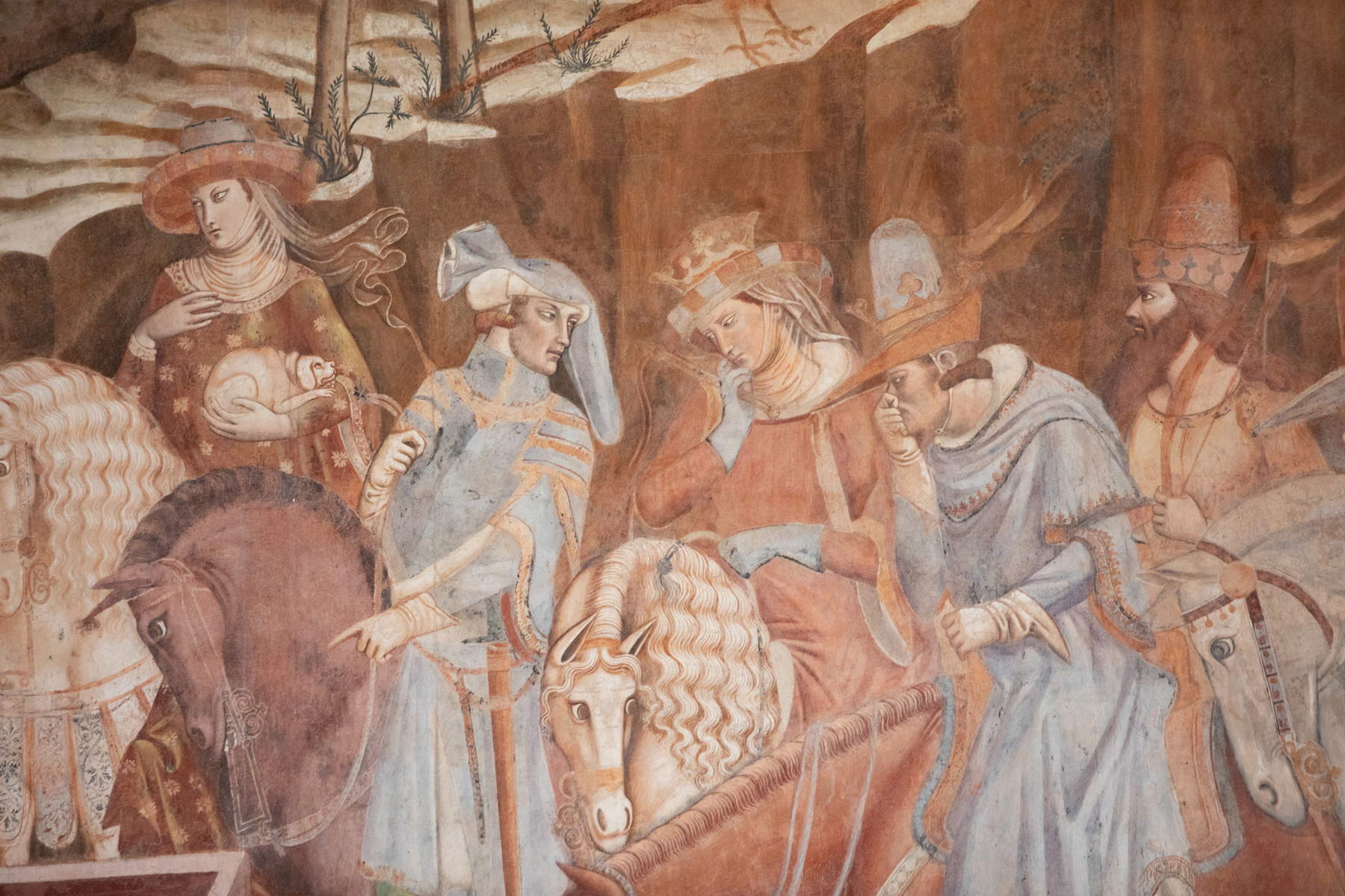 |
| Bonamico Buffalmacco, Triumph of Death, detail of the discovery of the three corpses |
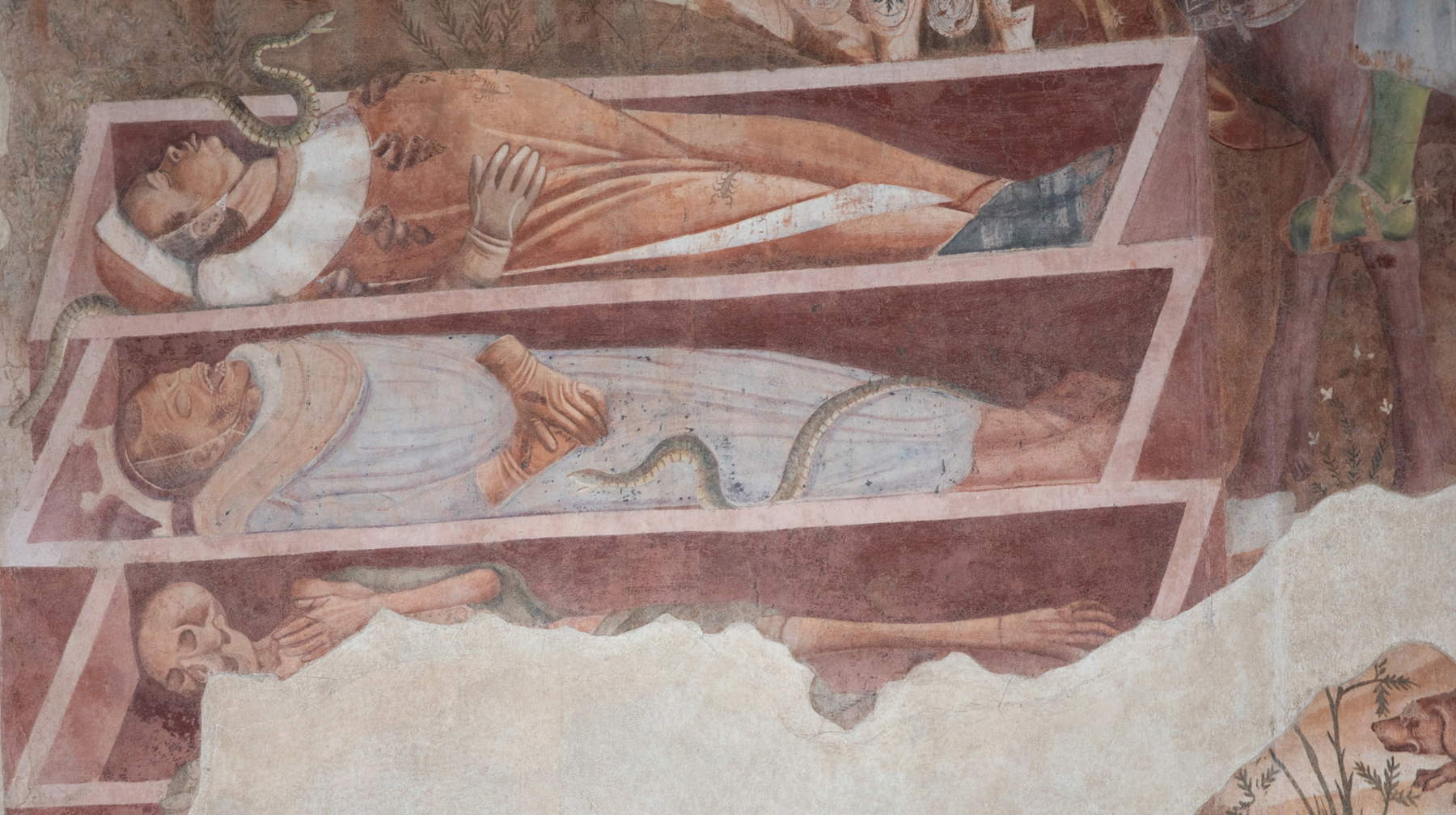 |
| Bonamico Buffalmacco, Triumph of Death, detail of the three corpses |
This is how Cesare Brandi, a young director of the Central Institute for Restoration, saw them in September ’44, who had arrived in Pisa by makeshift means because the Aurelia and the railroad were cut off.
He was carrying packages of black-and-white photos of the magnificent campaign conducted years earlier by Alinari. They were the photos that would later prove invaluable when the first restoration operations were begun. After Brandi, all the great art historians and restorers arrived in the fire-ravaged and vulnerable Cemetery. They came Carlo Ludovico Ragghianti at the time commander of the Tuscan military CLN, Mario Salmi, Roberto Longhi, Ugo Procacci accompanied by Frederic Hart, a lieutenant in the U.S. Army, one of the Monuments Men, the special corps set up by Roosevelt in 1943 to defend Europe’s artistic heritage threatened by war. There is also, along with Procacci, a very young 22-year-old Umberto Baldini, in the uniform of a second lieutenant in the Italian Liberation Corps.
Along with the art historians are the restorers, the best mural painting specialists active in those years. Paolo Mora, Cesare Benini, Leone Lorenzetti, Leonetto Tintori. The situation was dramatic. It was necessary to act with extreme urgency using the materials and methods in use at the time. Measures were taken to detach the frescoes (bringing out the sinopites destined to end up in the museum dedicated to them inaugurated in 1979) and to place the wall paintings on asbestos supports with calcium caseate adhesive. Emergency measures conducted with improper materials that soon turned out to be inadequate when not also harmful.
The real problem was represented by the return of the detached frescoes to the wall. On the objective there was the unanimous consensus of the scientific world. After all, Cesare Brandi had written with exemplary clarity and effectiveness: “The Camposanto di Pisa without the frescoes seems to be seen upside down... where the site of the removed frescoes was, the great squalid walls, though unaltered, are no longer the same insofar as to their very spatial qualification the pictorial decoration was essential.”
While unanimous, then, was the sharing of the goal, the same was not true regarding the possible ways of their concrete implementation. Different schools of thought were compared, leading to inconclusive experiments and a delay lasting more than half a century.
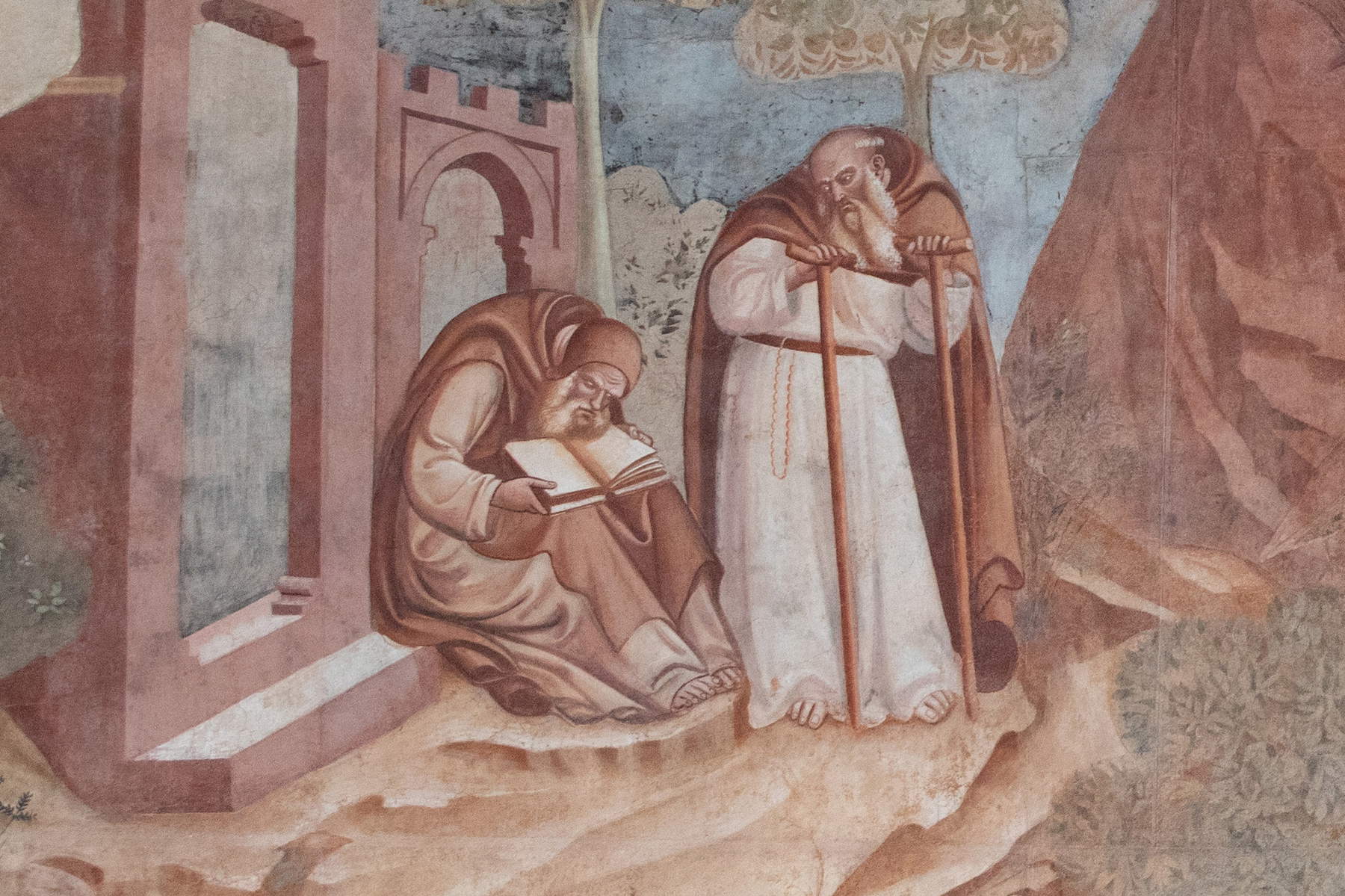 |
| Bonamico Buffalmacco, Triumph of Death, detail of the anchorites |
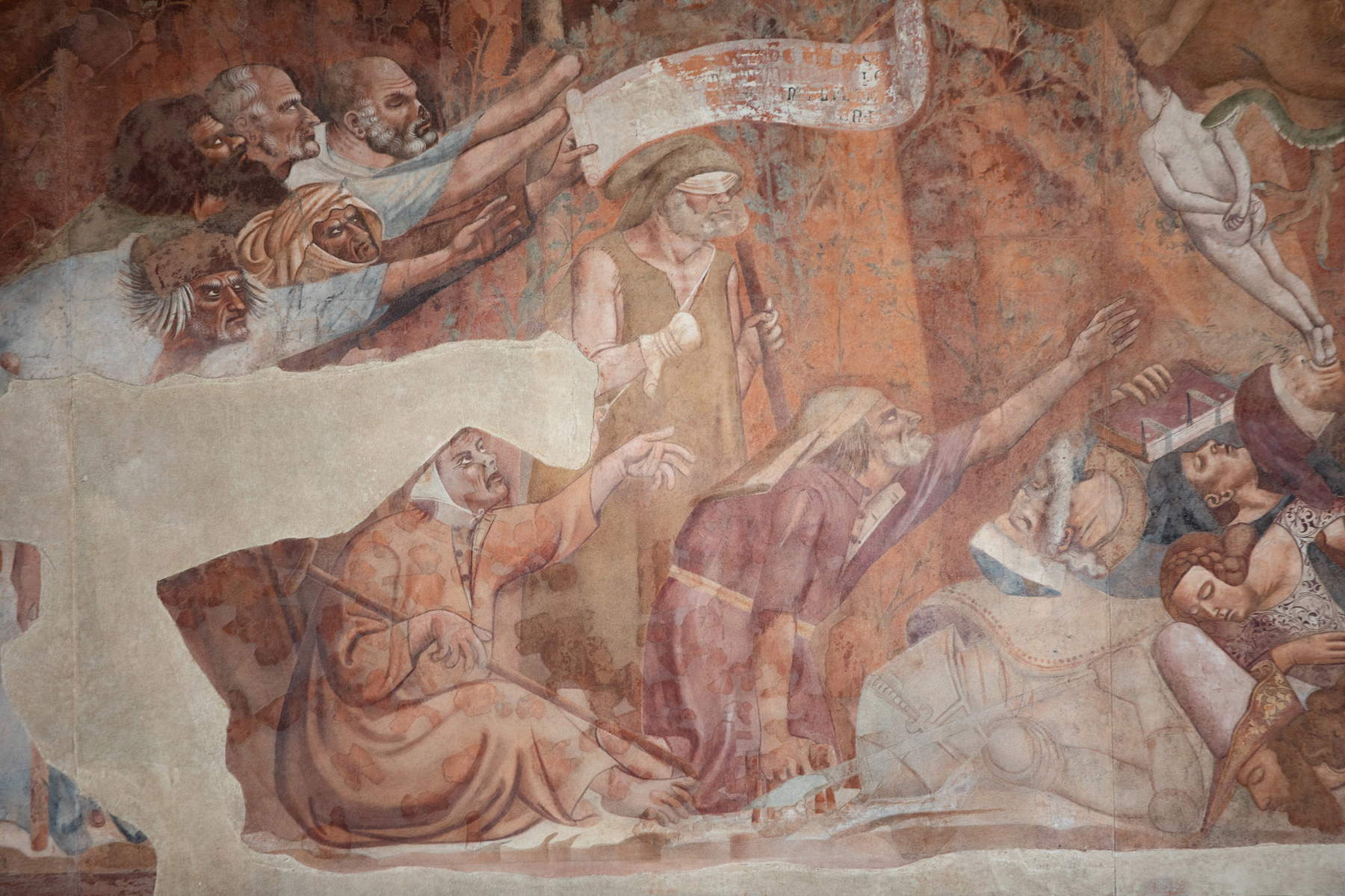 |
| Bonamico Buffalmacco, Triumph of Death, detail of the poor and sick invoking Death |
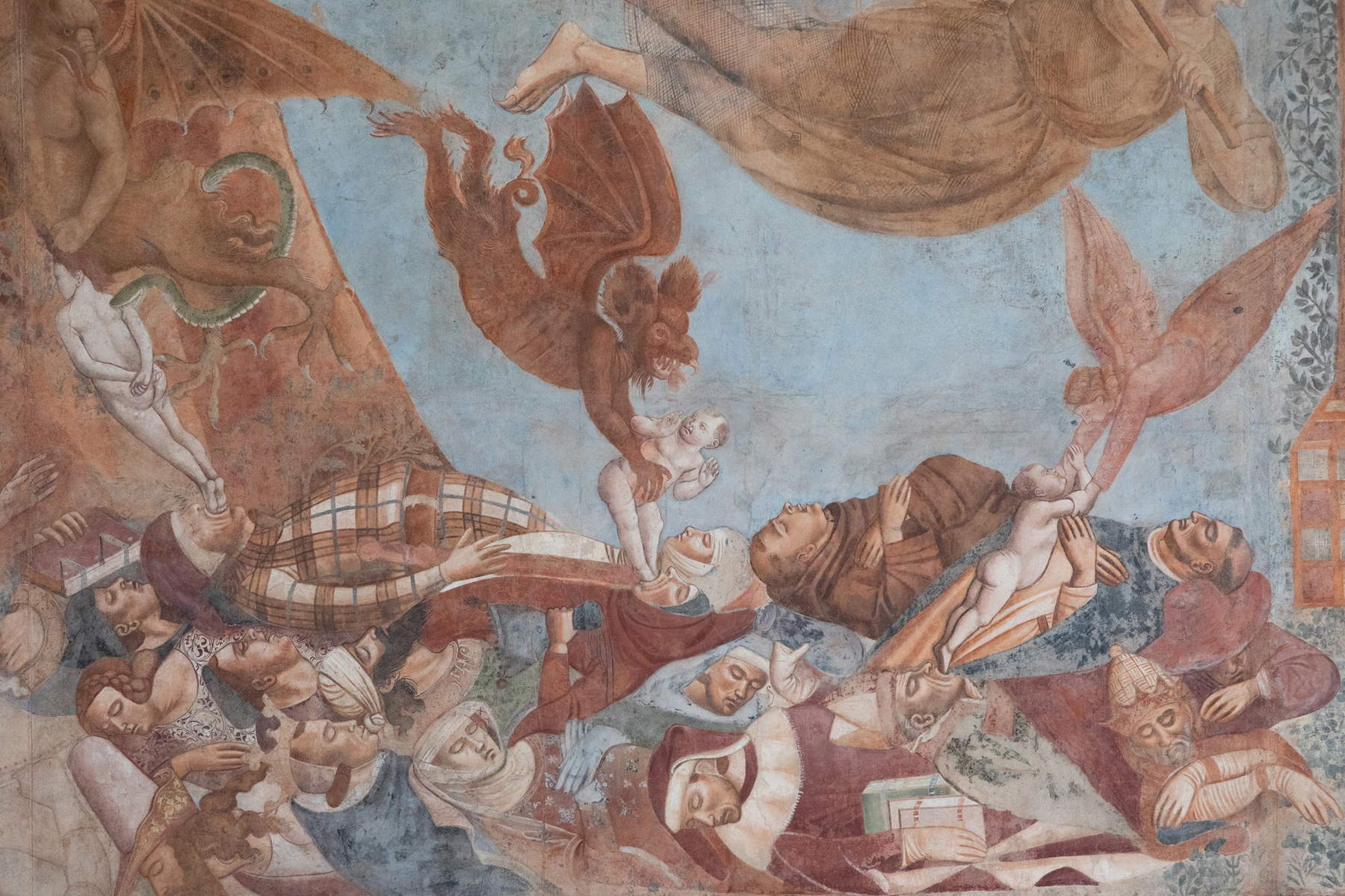 |
| Bonamico Buffalmacco, Triumph of Death, detail of the powerful overcome by death |
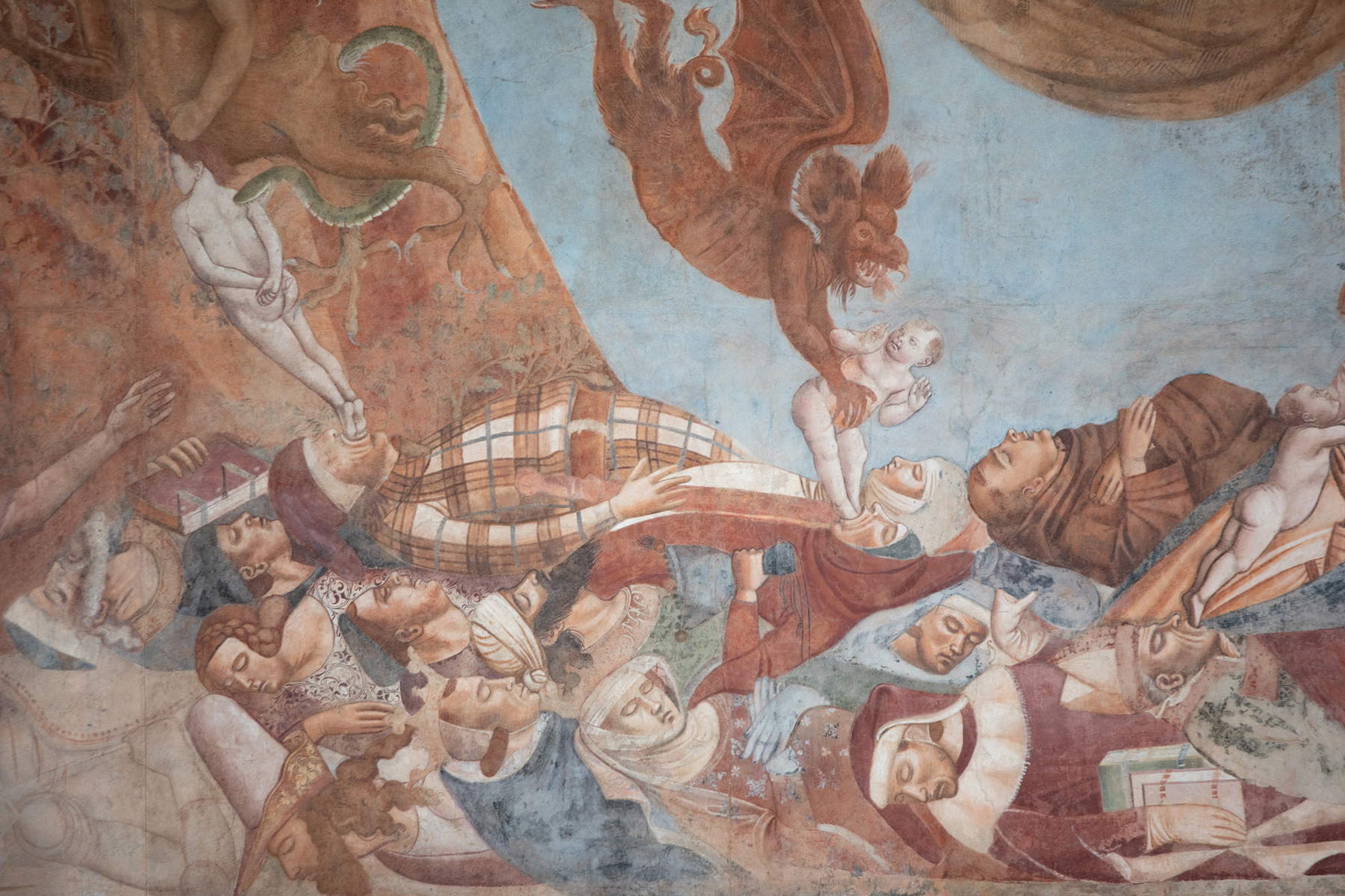 |
| Bonamico Buffalmacco, Triumph of Death, detail of the powerful overcome by death |
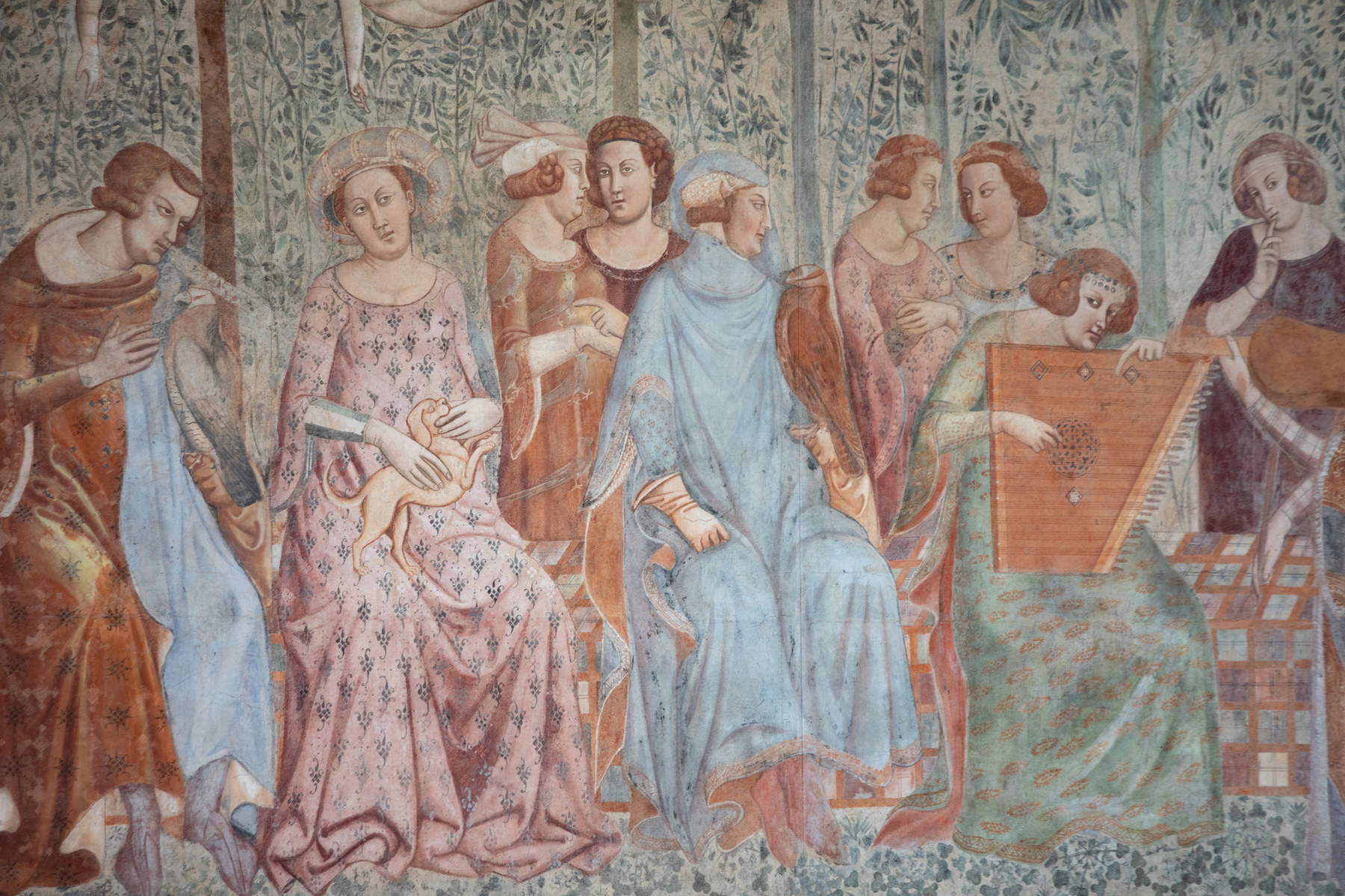 |
| Bonamico Buffalmacco, Triumph of Death, detail of the garden of love. |
The change of pace occurred in March 2008 on the occasion of the Conference promoted and organized by Pier Francesco Pacini, President of the Opera Primaziale Pisana. All the frescoes, none excluded, were to be put back on the wall, providing them with new supports with adjustable temperature thanks to computerized sensors so as to avoid condensation effects on the surface during the winter, of course ensuring to the monumental container adequate climatological conditions. This was decided in the 2008 conference.
To bring the project decided in 2008 to fruition, a commission was set up, which I chaired and coordinated, and included, among others, Gian Luigi Colalucci (the restorer of the Sistine Chapel) and Carlo Giantomassi: both of whom were responsible, together with Stefano Lupo chief restorer of a team of ten workers, for the implementation of the technical project. The committee also included art historians such as Antonino Caleca and Andrea Muzzi, Superintendent of Pisa, Conservation Science specialists Mauro Matteini former head of CNR Beni Culturali, Paolo Mandrioli, Ulderico Santamaria director of the Scientific Analysis Department of the Vatican Museums, Perla Colombini ordinary of Chemistry at the University of Pisa. In June 2018, after ten years of uninterrupted work, the great undertaking came to a conclusion.
No one thinks that one of the most important pictorial cycles of Italian artistic civilization has been restored “to its ancient splendor” as bad journalists write. There are parts irretrievably lost, others reduced to the shadow of what they were before ’44. I am thinking in particular of the murals by Benozzo Gozzoli.
Fortunately, in the general devastation of ’44, important portions of the Cemetery cycle and, in particular, the apocalyptic scenes of the Judgment, the Triumph of Death were relatively spared from the fire and today restoration is able to deliver them to a satisfactory level of legibility.
Today, after seventy-five years, the iconographic system that governs the murals of the Cemetery is legible again. There is the patron saint of Pisa Ranieri, in frescoes by Andrea da Firenze and Antonio Veneziano, while the stories of the martyred saints Efisio and Potito, whose relics are preserved in the Duomo, are painted by Spinello Aretino. Life means unforeseen events, misadventures and trials for everyone; it requires patience and endurance from everyone, and here are the stories of the patriarch Job, painted by Taddeo Gaddi. While everything in the story of Salvation alludes to the Time of Waiting and foreshadows the coming of Christ the Savior, as witnessed in the stories of the Old Testament, extremely deteriorated wall paintings by Piero di Puccio and Benozzo Gozzoli.
Everyone, however, must know that, on Judgment Day, one will enter Paradise through the narrow gate, through the gate of prayer and penance, as taught by the lives of the anchorite saints who triumph over Death, who also is the Lady of this world and consumes in horror and decay the glory of youth, the splendor of Love and the powers of earth.
At work here, in these justly famous stories, is the so-called Master of the Triumph of Death to be identified in the great early fourteenth-century Florentine master Bonamico Buffalmacco, a brilliant interpreter of a naturalistic and ultra-expressive variant of Giotto’s lesson. As Luciano Bellosi demonstrated in a memorable 1974 Einaudi essay.
Buffalmacco is documented in Pisa in 1336. It is around this year that he initiates and concludes the pictorial decoration of the Camposanto. The iconographic theme is the Dominican apocalyptic and ascetic one (probably inherited from the texts of his contemporary Domenico Cavalca), of the Triumph of Death.
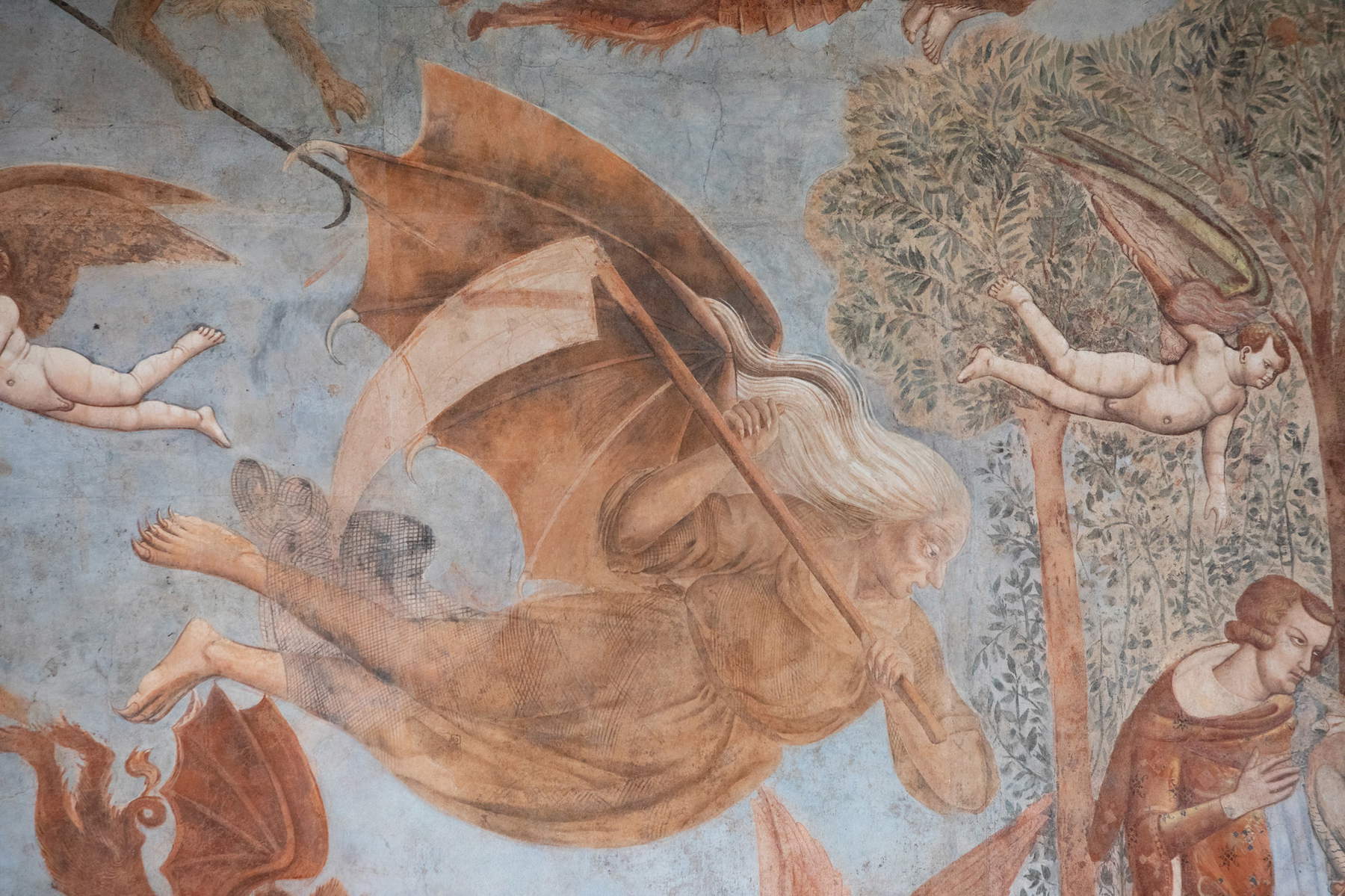 |
| Bonamico Buffalmacco, Triumph of Death, detail of the Death |
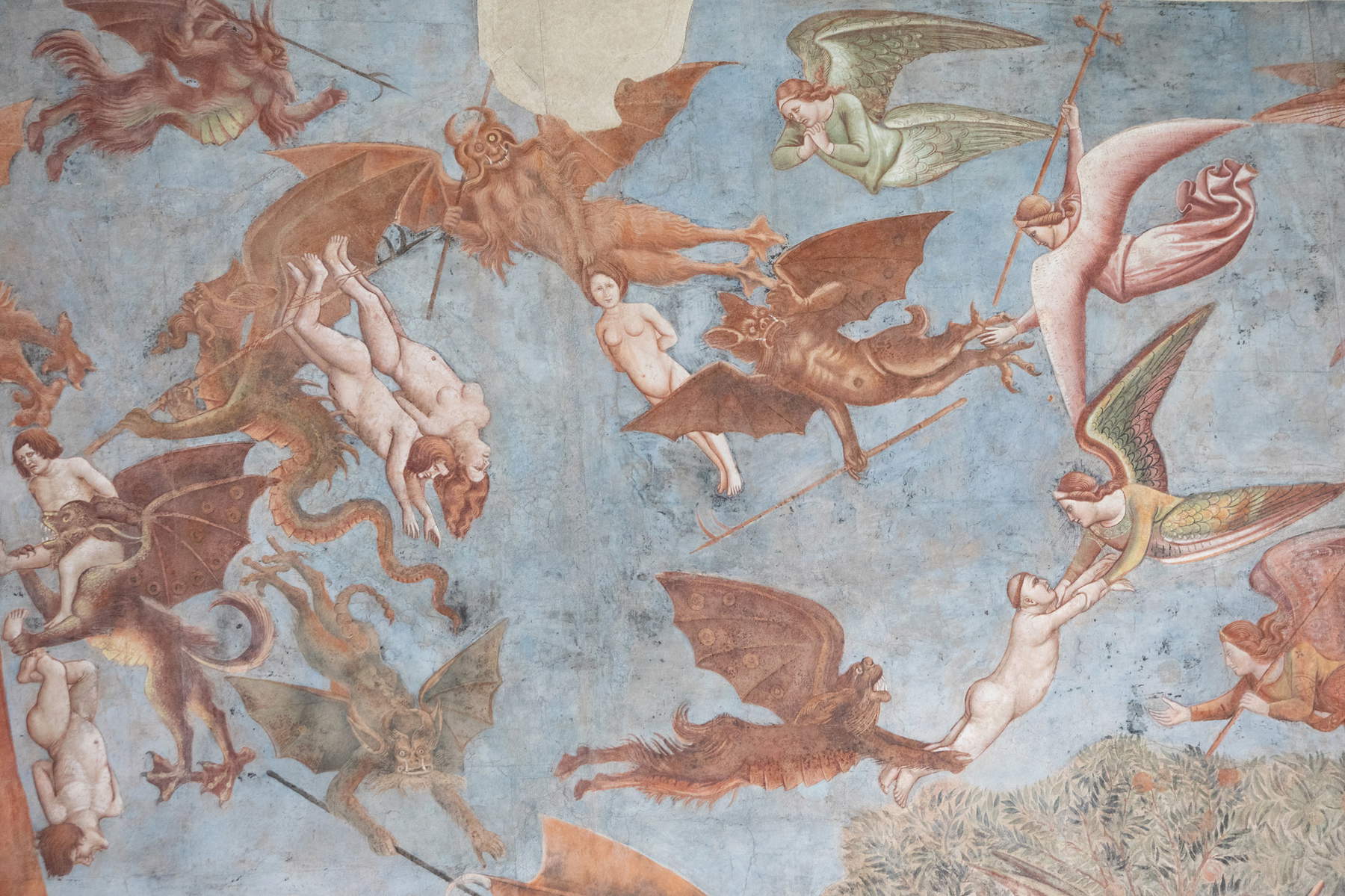 |
| Bonamico Buffalmacco, Triumph of Death, detail of demons and angels disputing souls |
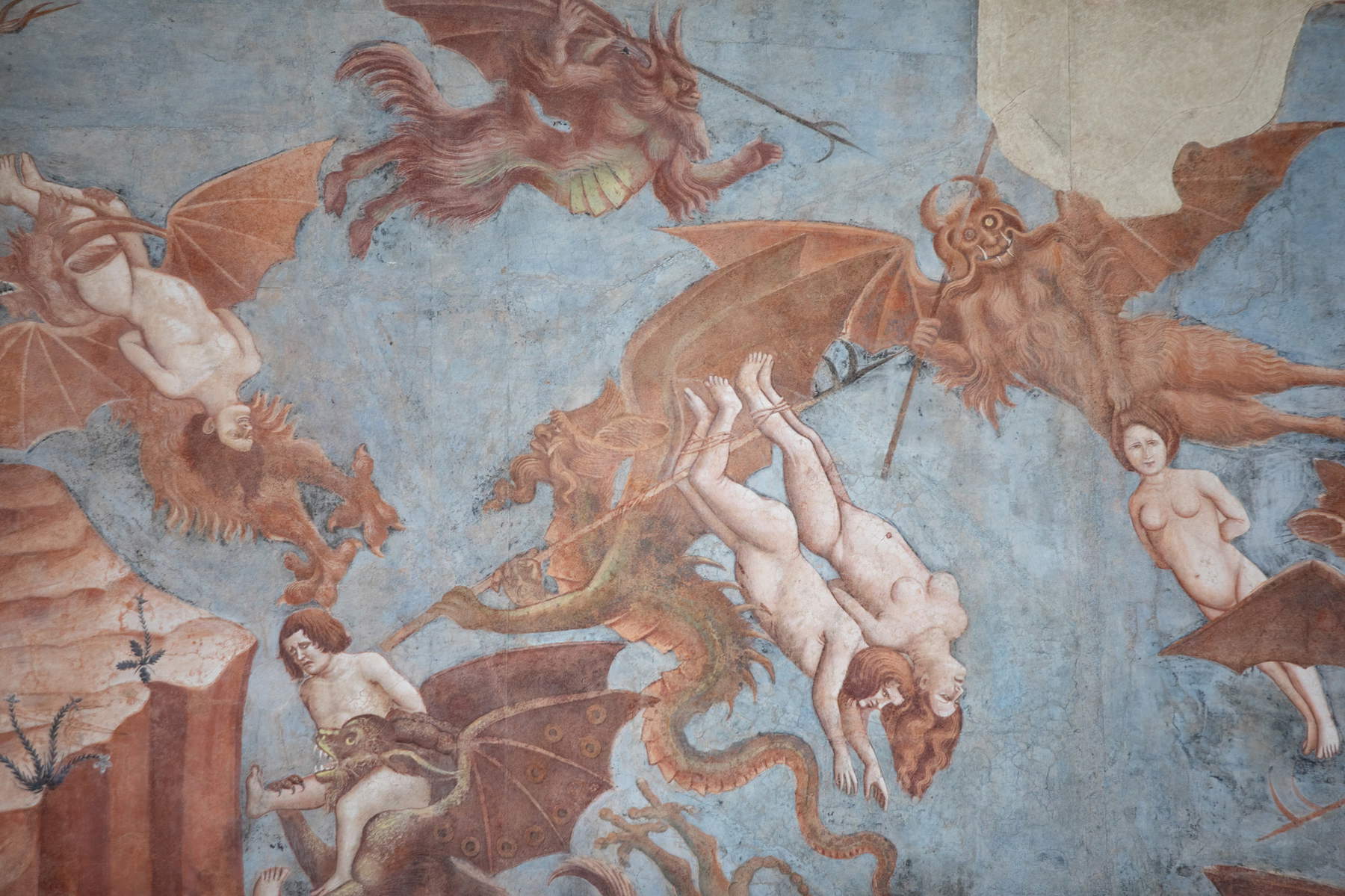 |
| Bonamico Buffalmacco, Triumph of Death, detail of demons and angels disputing souls |
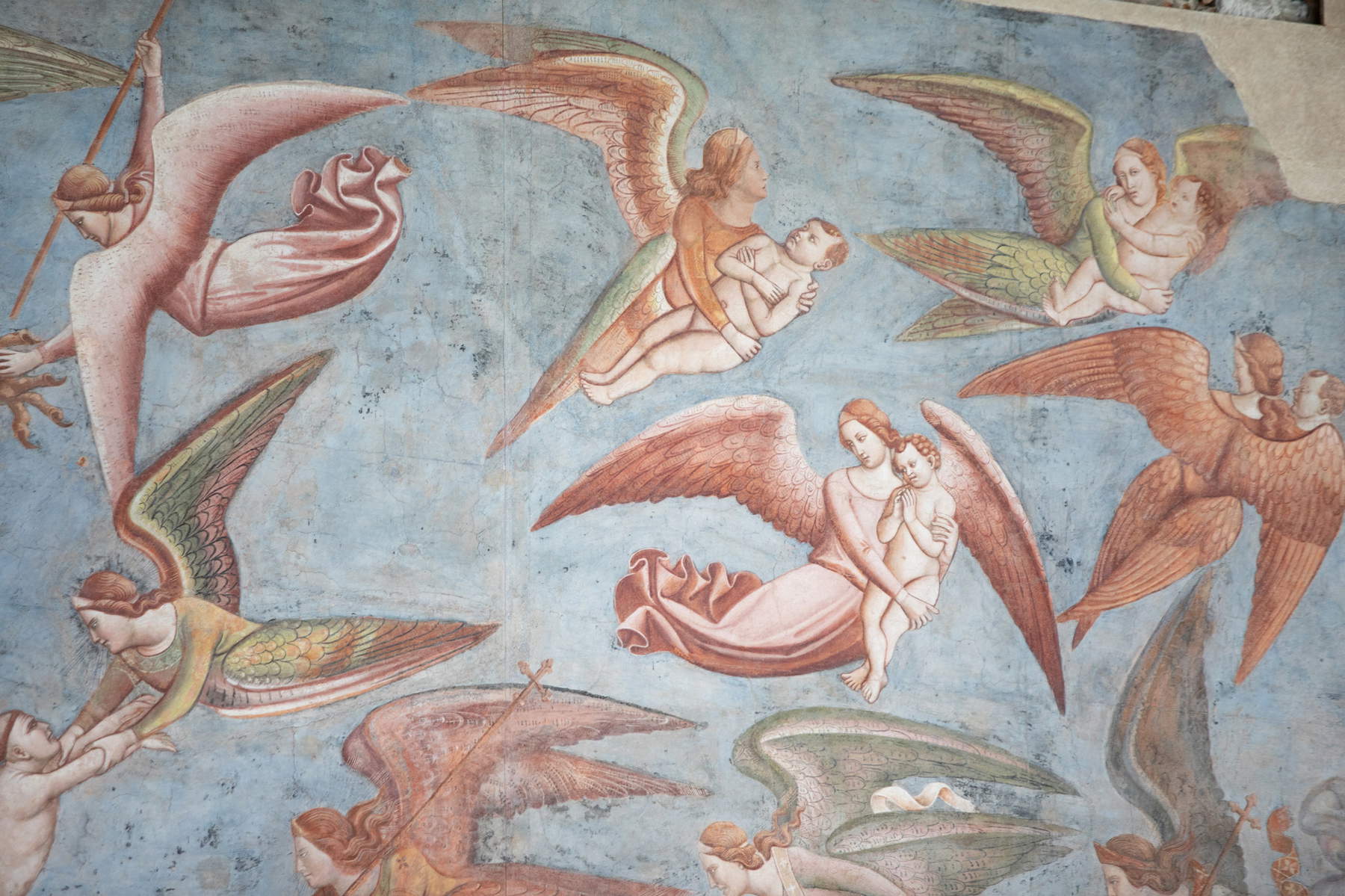 |
| Bonamico Buffalmacco, Triumph of Death, detail of demons and angels disputing souls |
Death asserts his power, through a sequence of contrasts. It is a contrast the love garden where beautiful girls play and sing happily, set against the meeting of the three living with three dead. This is the most famous detail of the scene. A merry cavalcade of handsome young men rides through the woods on a hunting trip and here encounters three corpses represented at a different level of putrefaction. The horses discard, the dogs snarl sniffing the scent of Death, the girls cover their noses with a handkerchief, and the dead watch the living so that they may know what their fate will soon be.
In another portion of the fresco we see Death, the great mower, reaping his estates of this world. She neglects the poor, the sick, and the afflicted who also invoke her as a remedy for their ills, while she pounces on the powerful of this world: popes, kings, bishops, judges, notables of various kinds. Of all of them, united by the scythe of Death, demons and angels (here is another contrast) contend for the souls.
There is then, a fundamental key, the contrast between the happy life of the garden of love and the merry ride, and the solitude of the anchorite saints who, in the desert, overcome death by consuming their lives in penance and prayer.
We are faced (the latest restoration allows us to understand this as never before) with a magnificently realistic strongly expressive painting, which seems to contradict the Giottesque order and measure from which it also derives. In the murals of the Camposanto in Pisa, Bonamico Buffalmacco, the protagonist of some of the most savory novellas of the Decameron, ranks at the highest level of great fourteenth-century Italian painting.
Warning: the translation into English of the original Italian article was created using automatic tools. We undertake to review all articles, but we do not guarantee the total absence of inaccuracies in the translation due to the program. You can find the original by clicking on the ITA button. If you find any mistake,please contact us.